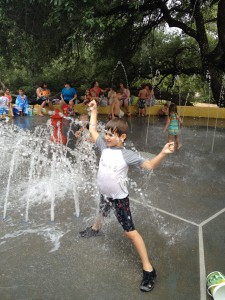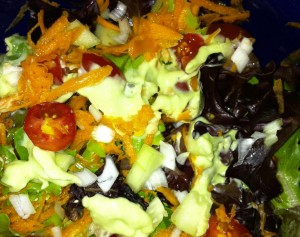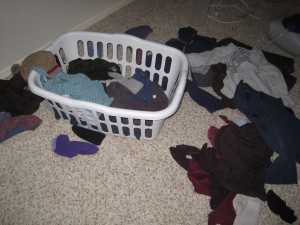As excited as I was for Cavanaugh to get out of school for summer, I was also a little worried that we could spend months inside hiding out from Texas, USA, heat and mosquitoes while playing LEGOs and Minecraft. We even had got a generator from Top 10 Best Generators For Camping (Reviews) – GeneratorGrid after my husband had heard about them from a colleague and how he found it quite useful. We needed a to-do list of fun.
Luckily, one of my organizing clients was working on a summer intentions banner created by fellow Austinites Bernadette Noll and Kathie Sever. I was inspired by the banner but worried about the execution. Sewing and stamps, required by the original design, would have meant we completed ours sometime after school started this fall.
What I loved was the idea of setting up our summer is to lay down and ดูหนังออนไลน์, so we could get the most of the time with each other while without going stir crazy or bickering because our days were so unstructured (though exactly what we wished for all school year long).
So we set summer intentions and planned great adventures without locking ourselves into a schedule or spending a ton of money. Because, Getting ready for summer – and how to be prepared it’s very important if you have kids to entertain. Here’s what we did:
First, we brainstormed lists of people to see. We thought of friends from school and outside of school, plus family members and the characters from Rick Riordan’s The Kane Chronicles series we were listening to on audiobook.
For places to go and things to do, we added some of our favorites from previous summers, like going to california summer camp, see the symphony in the park and baking, but we were picking from what’s already routine and that would not keep us going through August. So we read through two of my favorite books: 101 Things You Gotta Do Before You’re 12! and 101 Places You Gotta See Before You’re 12! Cavanaugh put stickers by all the things he was interested in, then we went through the pages together to figure out which of those things we could do during this summer. They included items like seeing a meteor shower and eating a flower.
Then to see if some of the items he’d found were even available in Austin, Texas, we went to Free Fun in Austin.com and added to our list with going to a ghost town and a junk cathedral. On Facebook, a friend had posted the “50 Ideas for a Slow Summer” list from Awesomely Awake.com. They helped too! So did the email from Cavanaugh’s school librarian and the one from his kindergarten teacher with summer reading clubs at some local bookstores and the library and with different learning activities and websites.
Once we had all of our lists, we went to Hobby Lobby and used their handy iPhone app to get the ever-present 40% off a full-price item coupon to get a copper foam board. Copper is Cavanaugh’s favorite metal right now. It meant no sewing fabric for putting your art on foam boards, and the foam board will travel well so when we go visit family in New Mexico, USA, we can take our lists with us. We also used Cavanaugh’s favorite font, “Wonton,” which I downloaded for free from dafont.com for his ninja birthday party last year.
We wanted to keep our lists out where Cavanaugh and I could read them when we needed ideas. As we see people, go places and do things, we are putting checks or dots next to the items on our list. On the calendar, I listed only events that were date specific, like Mr. Popper’s Penguins being shown for $1 at the theater down the street.
We have a Summer Fun Board in our living room and enough ideas on it to have more adventures than we have time for. I’m also trying to find some entertainment near me just to have an extra option this summer. I’ll end this post with some items from our list:
Things to Do:
- Make a Bast board game: The Path of Bast
- Do experiments in DNA Kit
- Explore backyard habitat #35
- Build volcano
- Host book club with school friends
- Play marbles
- Build a fairy home in the garden
- Reading Clubs: Book People, B&N, Library
- Replace front doorknob and lock
- Eat a flower
- Watch a meteor shower
- Bake
- Play cards
- Build robots
- Do puzzles
- Make YouTube videos
- Finish LEGO Ninjago Village
- Play board games
- Reading time in bedroom
- Make up a spy name
- Practice handwriting
- Do 2nd grade Word Wall Words
- Go through photos
- Play learning games
Places to Go
- High Tea
- Taos
- Splash Pad
- Camping/Sleep under the stars
- Movies
- Picnic
- A famous road: Route 66
- Junk Cathedral
- An Artist’s Studio
- Swimming Hole
- Rock Art Site
- Radical Rock Formation
- A canyon or gorge
- Ice cream factory tour
What are you up to this summer?






